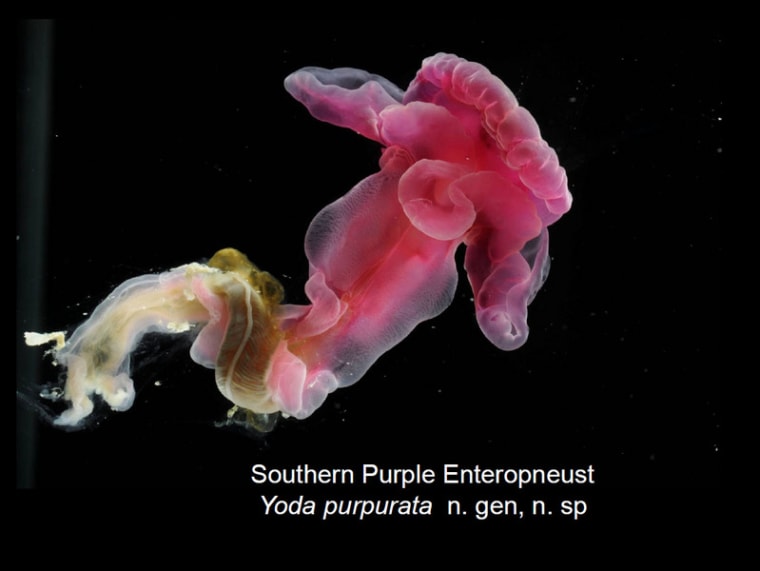Discovered a new type of acorn worm, scientists have. Named it after Yoda, they did.
The reddish-purple worm was found about 1.5 miles (2.5 kilometers) beneath the surface of the Atlantic Ocean, and has large lips on either side of its head region that reminded researchers of the floppy-eared Stars Wars character. Its full scientific name is Yoda purpurata, or "purple Yoda."
Researchers found the worm during the ECOMAR research program, which uses a remotely operated submersible to search for new animals along the seafloor at the Mid-Atlantic Ridge between Iceland and the Azores.
During the expedition, researchers from the University of Aberdeen in Scotland also found two other new species of acorn worm. The animals are described in a study published in the September issue of the journal Invertebrate Biology.
Shallow water acorn worms live in burrows and are rarely seen, whereas deep sea species live on the seafloor, leaving spiral traces of poo that resemble crop circles. These traces have been seen in fossil form, but until recently, nobody knew what produced them.
Scientists are interested in these deep sea species because they are close to the evolutionary link between vertebrates and invertebrates.
In other words, the force is strong with them.
But Yoda purpurata is hardly the only species to be named after a famous character, fictional or not. Recent examples include a horse fly named for Beyoncé, an isopod (this group includes pill bugs) near Zanzibar (an island of Tanzania in East Africa) named after Freddie Mercury ("arguably Zanzibar's most famous popular musician and singer") and slime mold beetles named after George Bush, Dick Cheney and Donald Rumsfeld.
Reach Douglas Main at dmain@techmedianetwork.com. Follow him on Twitter @Douglas_Main. Follow OurAmazingPlanet on Twitter @OAPlanet. We're also on Facebook and Google+.
